La Bienal de arquitectura de Venecia es la exposición de arquitectura más importante, o por lo menos la más famosa del mundo. Existe desde 1980 y trata desde entonces de tomar el pulso de la arquitectura contemporánea, de mostrar los arquitectos más importantes y de dar la oportunidad a los países de mostrar qué están construyendo.
Cada bienal tiene un director distinto y esta vez era el famosísimo (dentro del medio) arquitecto holandés Rem Koolhaas de la agencia Office for Metropolitan Architecture (OMA). El título del evento era “Fundamentals” porque , según Koolhaas, se trataba sobre los elementos básicos de la arquitectura, más que sobre promover arquitectos, estilos o teorías.
The Venice Architecture Biennale is the most important architecture exhibition, or a least the most famous one in the world. The first one took place in 1980 and since then it tries to measure the pulse in contemporary architecture, to show the most important architects and to give the opportunity to the countries to show what they are building.
Each biennale has a different director and this time it was the super famous (in the medium) Dutch architect Rem Koolhaas from the agency Office for Metropolitan Architecture (OMA). The title of the event was “Fundamentals” since, according to Koolhaas, it was about architecture’s basic elements, more than promoting architects, styles or theories.
La bienal tiene dos sedes principales: “Giardini”, un complejo donde estaba la exposición central llamada “Elements of architecture” y los pabellones de varios países del mundo. La segunda sede era el Arsenal, un antiguo edificio militar. En él se encontraba “Monditalia” que era una serie de exposiciones realizadas por varios investigadores y había otra sección con exposiciones de otros países que no tenían su propio pabellón.
“Elements of architecture” trataba sobre las diferentes partes de cualquier obra arquitectónica, el techo, el piso, la puerta, la pared, etc. Cada sección fue realizada por un diferente equipo de investigadores provenientes de diferentes universidades o museos.
El objetivo de la bienal era crear un evento orientado a la investigación y a pesar de tener un fuerte componente académico trató de ser muy accesible. Los aspectos básicos de la arquitectura son cosas que todos podemos disfrutar, los que no son arquitectos porque son cosas que ven a diario, los que somos arquitectos porque jamás vamos a aprender todo lo que hay que saber sobre ellos. Sin embargo, la bienal ha recibido muchas críticas como el hecho que Koolhaas al no querer promover otros arquitectos ha resultado ser el único que ha tenido visibilidad. Pero me parece una crítica injusta, al final cualquier cosa que hiciera hubiera estado mal: si mostraba sus arquitectos predilectos lo hubieran acusado de favoritismo, como no lo hizo lo tildan de egocéntrico. Me pareció genial que le diera la oportunidad a investigadores de todas partes del mundo de participar en este evento, especialmente en esta época que la investigación es un oficio con tan pocas recompensas. Uno iba a ver lo que hizo Koolhaas pero terminaba aprendiendo sobre muchas otras personas.
En esta ocasión les muestro las fotos de “Elements of architecture” y en próximas ocasiones voy a publicar lo mejor de los pabellones, nacionales (eran 65 en total!!) y lo poco que pude ver de Monditalia.
The biennale has two main sites: “Giardini”, a complex where there was the main exhibition called “Elements of architecture” and the pavilions for some of the countries. The second site was the Arsenale, an old military building. There you could find “Monditalia” a series of exhibitions created by different researchers and there were exhibitions from other countries that didn’t have their own pavilion.
“Elements of architecture was about the different parts of any architectural work, the roof, the floor, the door, the wall, etc. Each section was done by a different team of researchers from many universities or museums.
The biennale’s objective was to create an event that was research-oriented and even though it had a strong academic component it really tried to be accessible. Architecture’s basic aspects are things we can all enjoy, those who are not architects because of the fact that they are things they see everyday, for us architects because we will never learn everything there is to know about them. However, the biennale has been heavily criticized because since Koolhaas didn’t want to promote any other architects he has been the only one getting visibility. But I find this to be an unfair critic; it seems that no matter what he did would have been wrong anyway: if he had shown his favourite architects he would have been accused of partisanship, since he didn’t he’s egocentric. I thought it was great that he gave the opportunity to researchers from all over the world to participate in this, especially now that research has become such a thankless labour. You went to see what Koolhaas did and you ended up learning about much more other people.
In this occasion I will show you the pictures from “Elements of architecture” and in future posts I will publish the best of the national pavilions (they were 65 in total!!) and the few things I got to see of Monditalia.
Cielo falso/Ceiling:
La primera exposición era sobre el cielo raso y mostraba el contraste entre los cielo rasos en edificios antiguos donde se prestaba mucha atención a la decoración y sobre los que se construyen en la actualidad, donde lo más importante es la funcionalidad.
The first exhibition was about the ceiling and showed the contrast between ceilings in old buildings where there was a lot of attention put into its decoration and those built nowadays, where the most important thing is functionality. 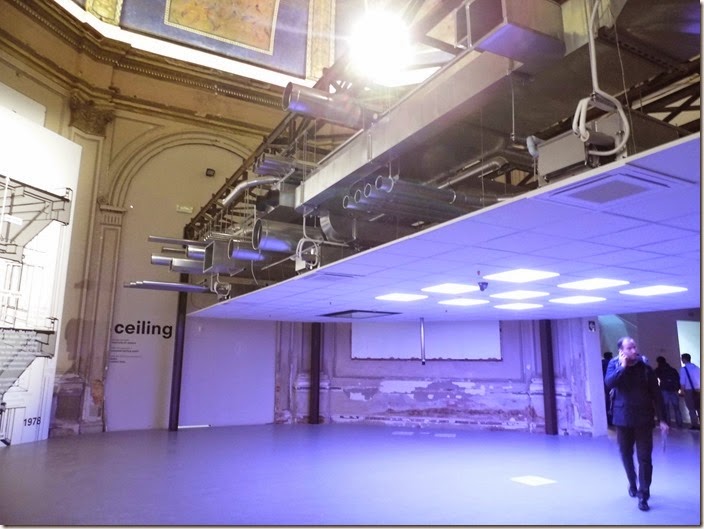
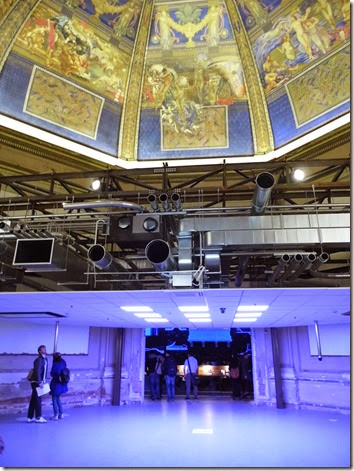 | 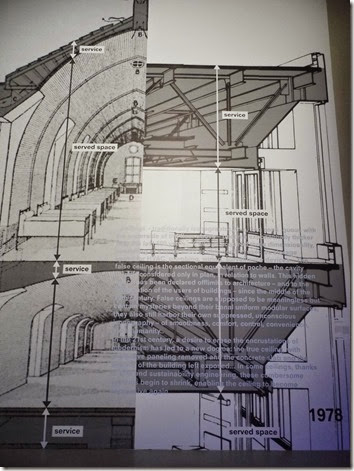 |
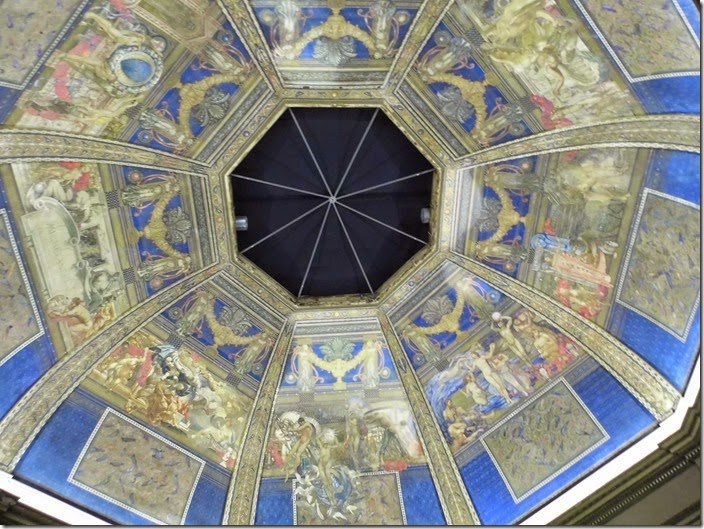
Introducción/Introduction:
En lo que era la introducción se proyectaban segmentos de películas donde la arquitectura tenía un rol central. Había también una muestra de libros importantes a lo largo de la historia de la arquitectura.
In the introduction part there were segments of films where architecture had a central role. There were also some important books all through the history of architecture.
Para la seccion sobre las ventanas tenían los diferentes tipos de ventanas a lo largo del tiempo, así como una explicación detallada sobre cómo se construyen las ventanas en nuestra época.
For the section dedicated to windows there were different windows throughout history, as well as a very detailed explanation on how windows are built in our time.
Para explicar el pasillo tenían una sala dedicada a la tesis de doctorado que defendió en 2011 un investigador alemán: “La historia del pasillo”. Luego había una serie de explicaciones sobre los tipos y significados de los pasillos según la tipología de edificio en el que se encuentran.
In order to explain the corridor there was a room about the Ph.D. thesis a German researcher defended in 2011: “The history of the corridor”. Then there was a series of explanations on the different types and meanings of corridors according to the typology of building in which they are located.
El area dedicada al piso tenía mosaicos antiguos, pisos contemporáneos, un piso que produce energía cuando la gente camina y baila sobre él y una alfombra eléctrica para oraciones musulmanas.
The area dedicated to the floor had ancient mosaics, contemporary floors, a type of flooring that produces energy when people walk or dance on it and an electric rug for Muslim prayers.
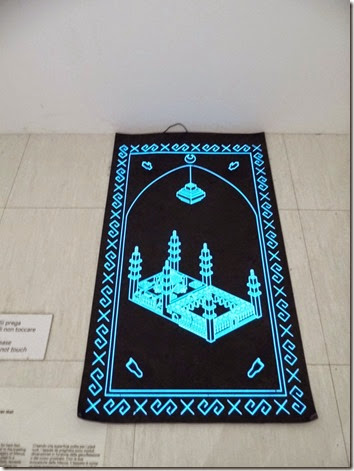 | 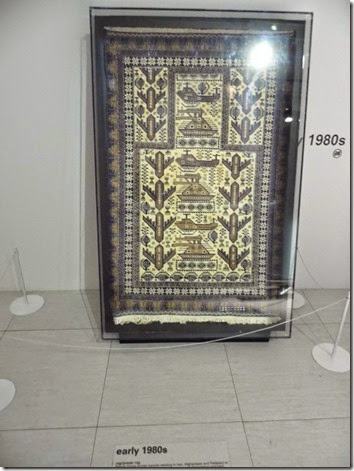 |
Balcón/Balcony:
La sala sobre los balcones los mostraba de diferentes épocas y de diferentes partes del mundo. Se mostraron también importantes personajes políticos de la historia que tuvieron momentos inmortalizados en fotos desde su balcón: Evita, Hugo Chávez, Evo Morales. Se podría creer que sólo los latinoamericanos salimos a las terrazas, pero por allí andaba Hitler también.
The room on balconies featured them from different periods and different parts of the world. It had also important politicians in history that had moments immortalized in pictures from their balcony: Evita, Hugo Chávez, Evo Morales. You could think only Latin-Americans go to their terraces, but Hitler was shown as well.
En esta sección se podían ver diferentes tipos de fachadas, algunas vegetales, otras luminosas, pero todas súper modernas.
In this section you could see different types of facades, some green ones, other LED ones, but all very modern.
Para presentar la chimenea había una gigantesca en el centro de la sala, pero también una explicación sobre la historia de la calefacción en los edificios.
To present the chimney there was a gigantic one in the centre of the room, but also an explanation on the history of heating in buildings.
La sección dedicada a las paredes presentadaba diferentes técnicas para construirlas, desde el ladrillo y la piedra, hasta formas experimentales, como esa en tejido con elementos móbiles que la hacían cambiar de forma.
The section devoted to the walls showed different techniques to build them, from brick and stone, to more experimental ones, like the one in fabric with mobile elements that made it change its shape.
 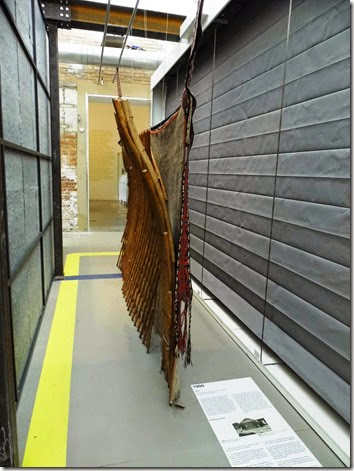 | 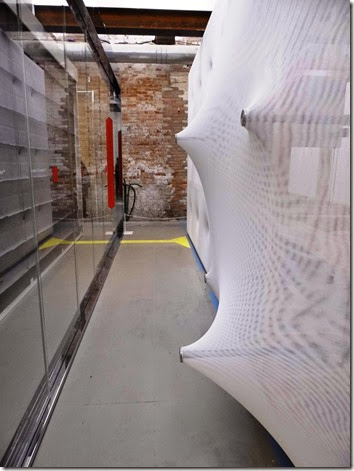 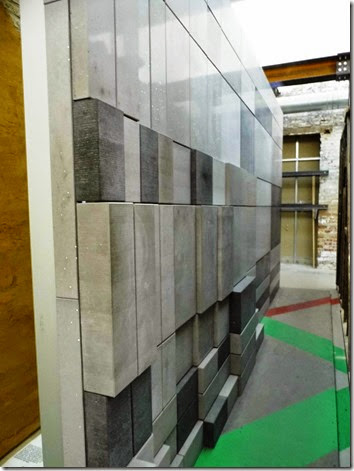 |
Toilet/Baño:
Esta sala mostraba diferentes inodoros e urinarios a través del tiempo y en diferentes culturas.
This room had different toilets and urinals throughout time and in different cultures.
Escalera eléctrica/Escalator:
Esta fue de las pocas salas que no me gustaron. Aparte del simulador, no sentí que le hubieran puesto mucho empeño.
This was one of the few rooms I didn’t like. Besides the simulator, I didn’t feel they had put much effort in it.
La sala sobre el elevador también me pareció muy poco inspirada, especialmente para lo importante que es este elemento en la arquitectura moderna. Lo rescatabale de esta sala fue poder ver el tipo de ascensor que usaron para sacar a los mineros chilenos en 2010.
I also found the room on the elevator to be of little inspiration, especially seeing how important this element is in modern architecture. The only thing that was worth it in this room was to see the type of elevator used to get out the Chilean miners in 2010.
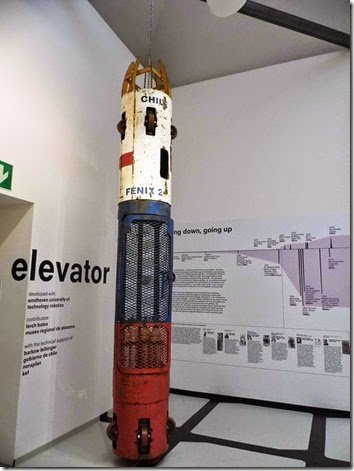 | 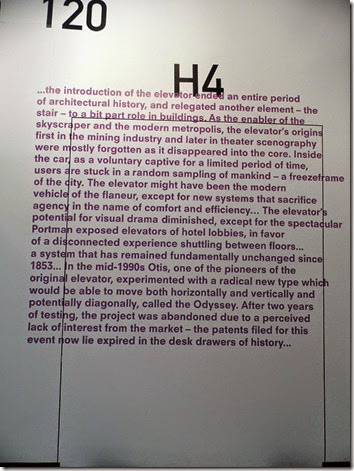 |
 Gradas/Stair:
Gradas/Stair: En esta sala se presentaba la historia y los tipos de gradas que existen. Lo interesante es que la exposición reunía los archivos de Friedrich Mielke, un hombre que ha dedicado su vida entera a estudiar las escaleras y sus partes, al punto de querer crear una ciencia la “escalología”.
This room presented the history and types of stairs that exist. The interesting thing is that the exhibition featured Friedrich Mielke’s archives, a man that has dedicated his entire life to study stairs and its components, to the point of wanting to create a science out of it, “scalology”.
Esta sala estaba genial, mostraba dos forma de enfocar las rampas: una relacionada con la accesibilidad según Tim Nugent, inventor de la rampa para personas con discapacidad y otra sobre la experimentación del espacio, basándose en la obra del arquitecto francés Claude Parent quien alteró los niveles de piso de su sala de estar a través rampas en diferentes inclinaciones.
This room was great, it showed two different ways to focus on ramps: one related to accessibility according to Tim Nugent, the inventor of the first ramp for people with disabilities and the one related to the space experimentation, based on the work of French architect Claude Parent, who altered the floor level in his living room thanks to ramps in different slopes.
La sección sobre el techo tenía maquetas sobre construcciones tradicionales chinas y mostraba en detalle cómo se construyen ese tipo de cubiertas. Como contraste se presentaban otras maquetas de cubiertas experimentales.
The section on the roof had models from traditional Chinese buildings and showed in detail how they are built. In contrast it presented some other models from experimental roofs.
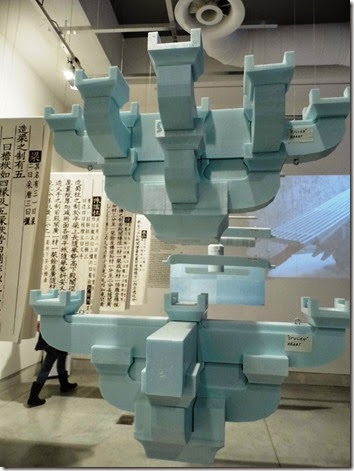 | 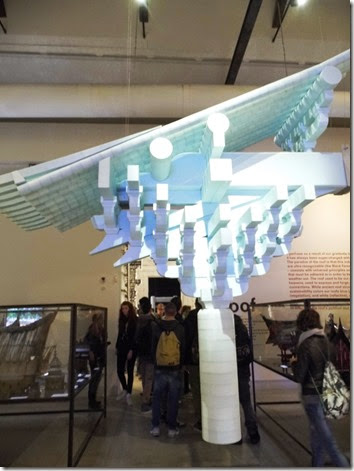 |
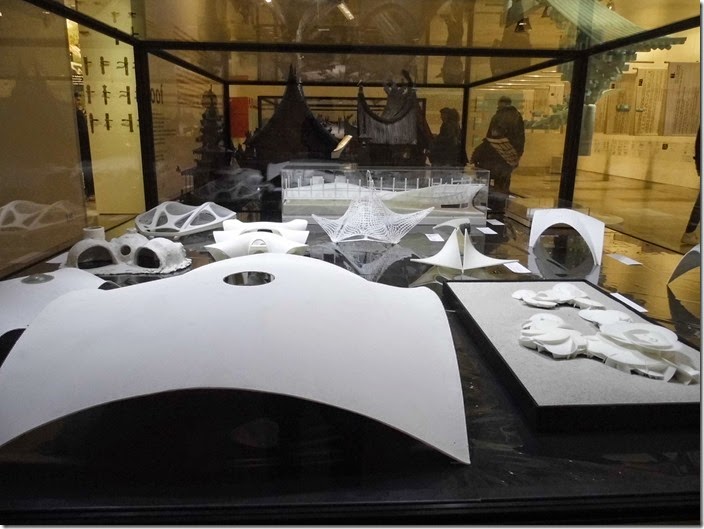 Puerta/Door:
Puerta/Door: Y finalmente para la puerta se quería explicar cómo los sistemas de defensa han cambiado con el tiempo. En una pared se mostraba el castillo de Hochosterwitz del siglo XVI y en la de enfrente el sistema de seguridad de un aeropuerto actual. De igual forma se podían ver manijas de diferentes épocas.
And finally for the door they wanted to show how defense systems have changed with time. One wall featured the 16th century Hochosterwiz castle and the one in front of it showed a contemporary airport security system. You could also see door handles from different periods.
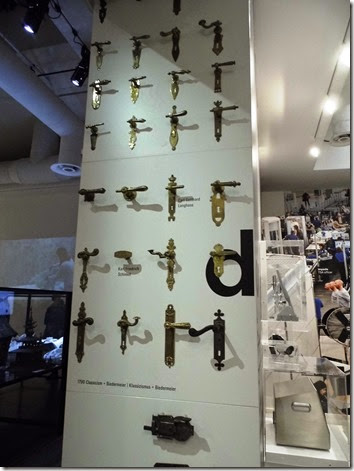 | 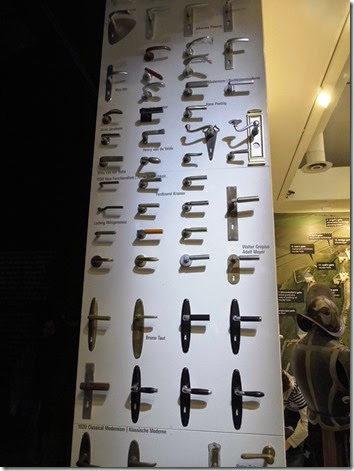 |
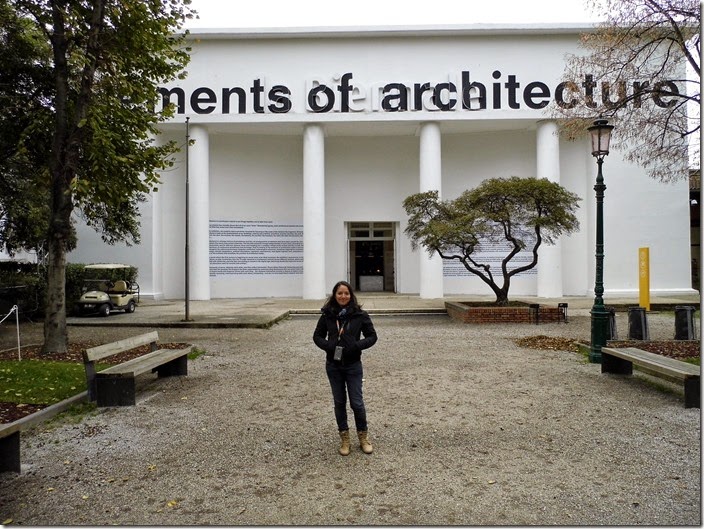
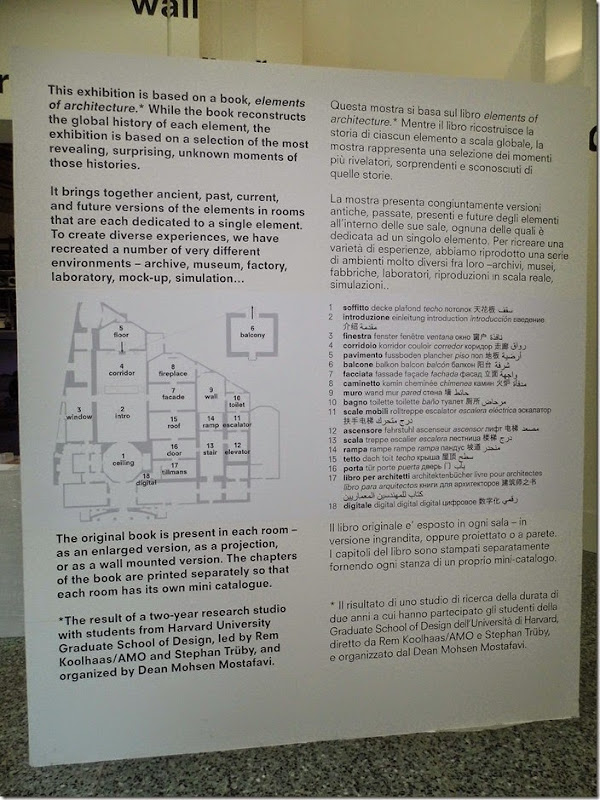
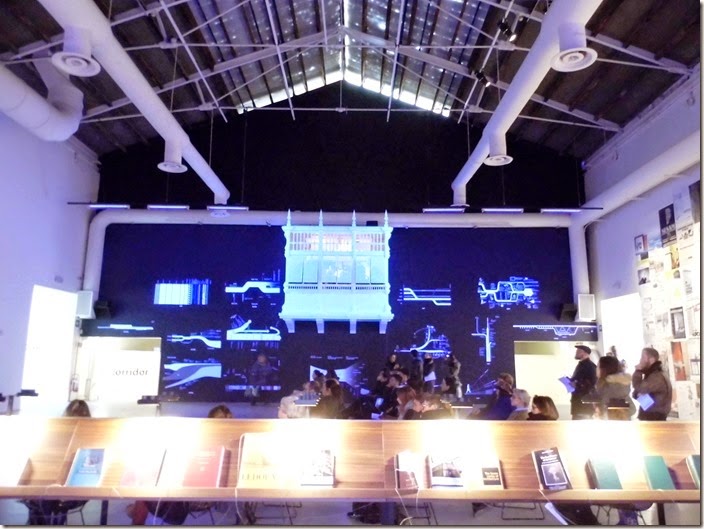
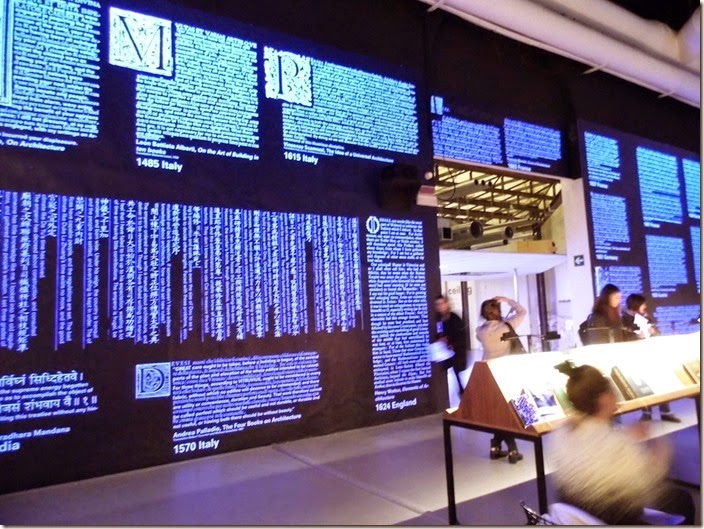
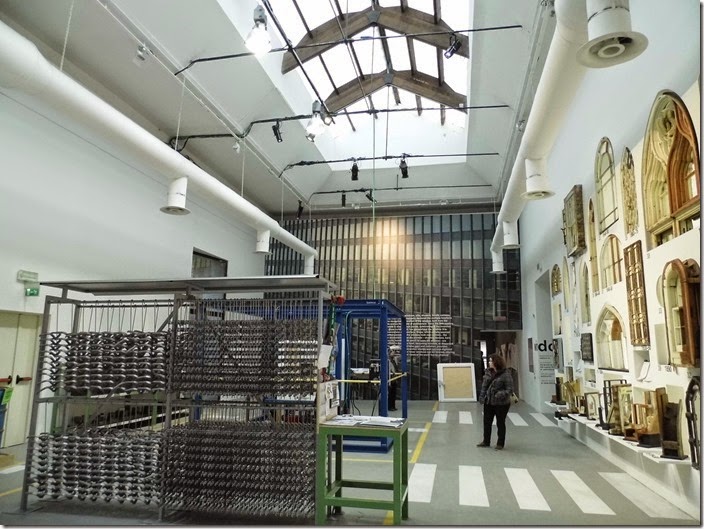
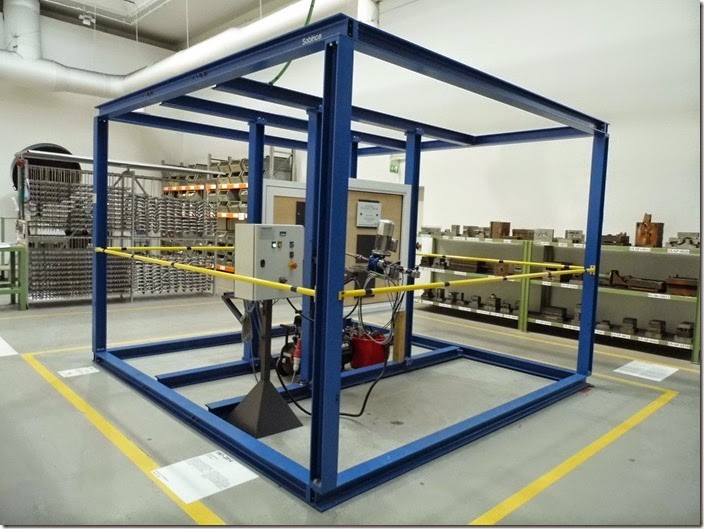
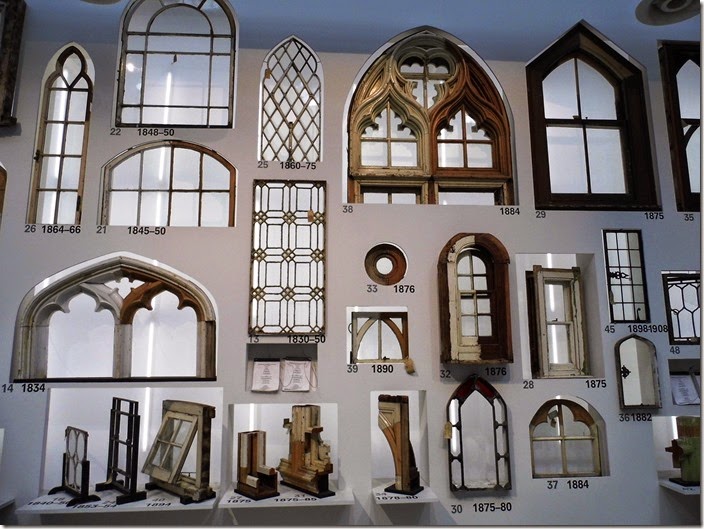
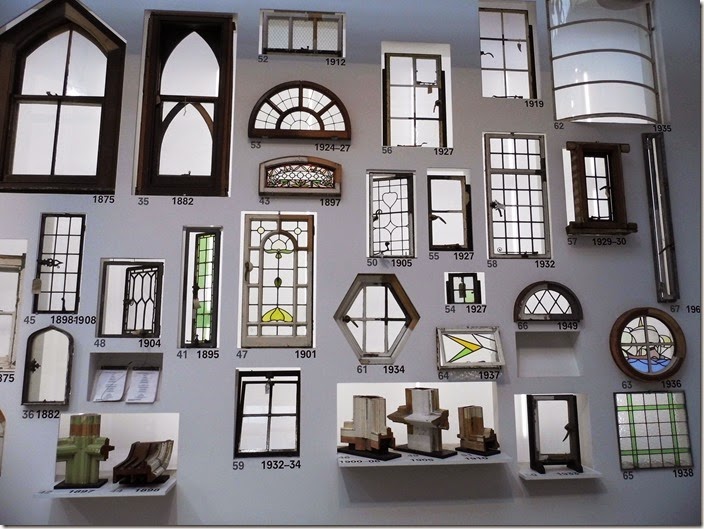
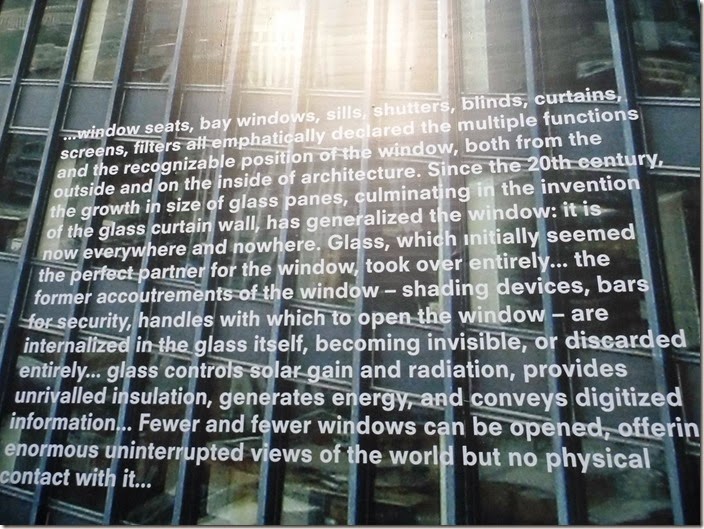

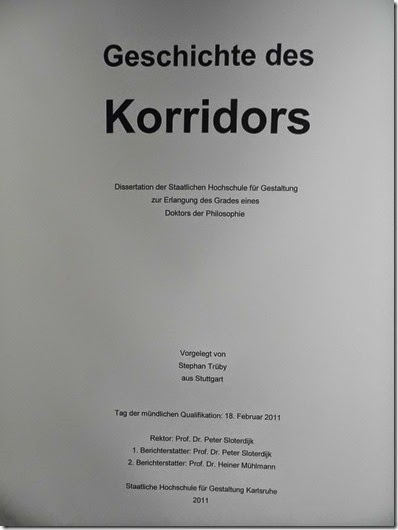
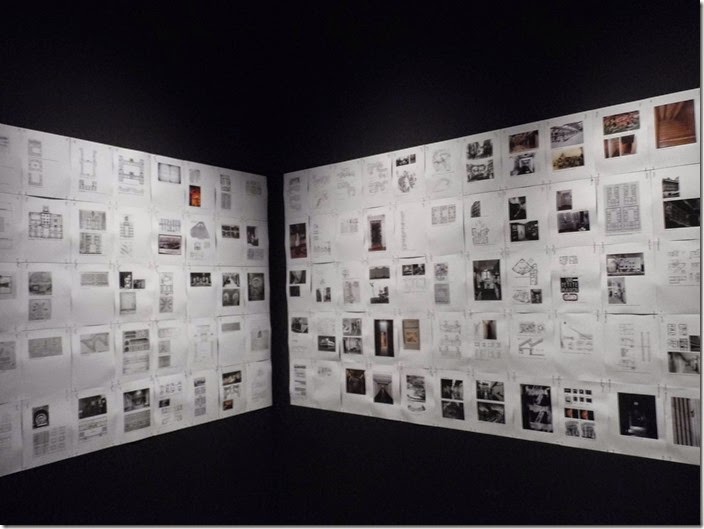
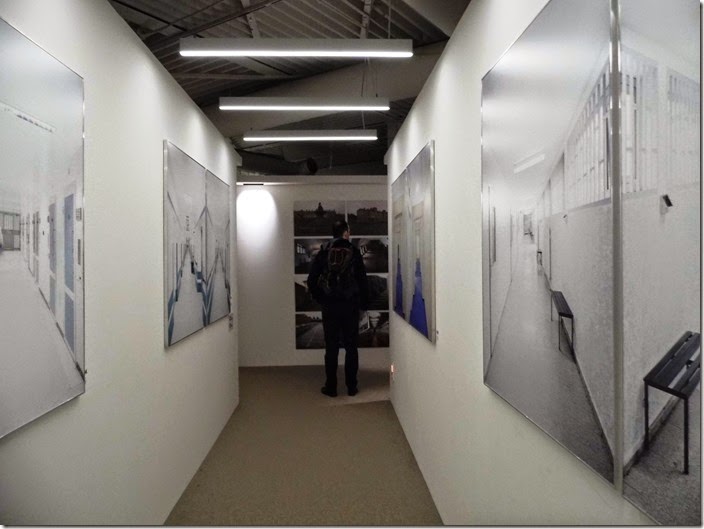
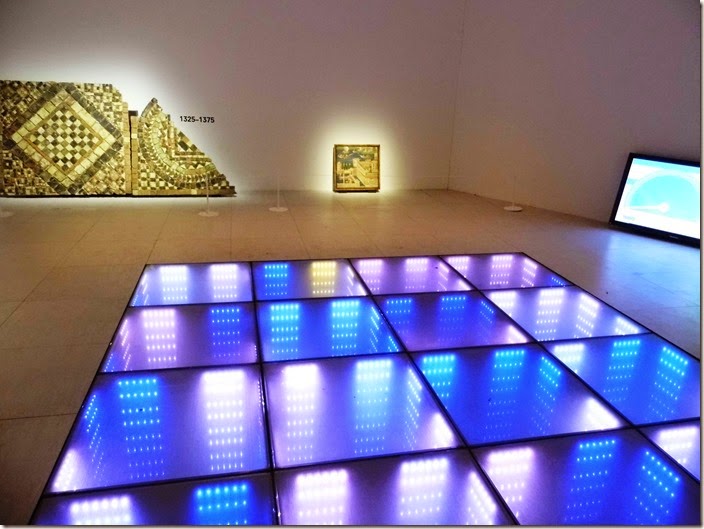
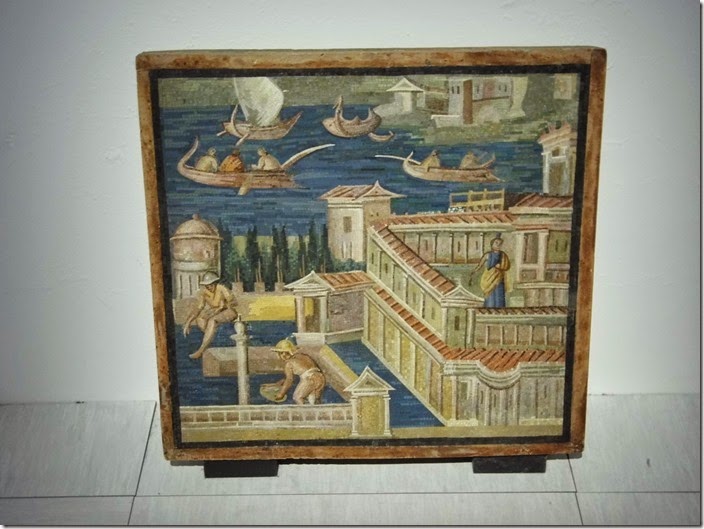
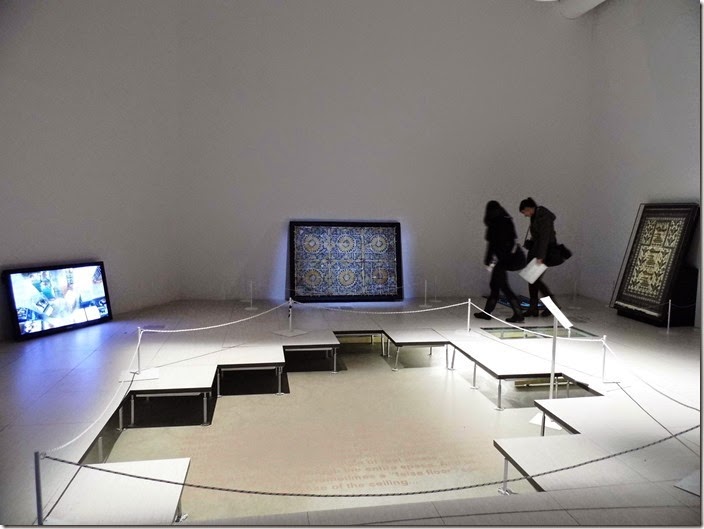
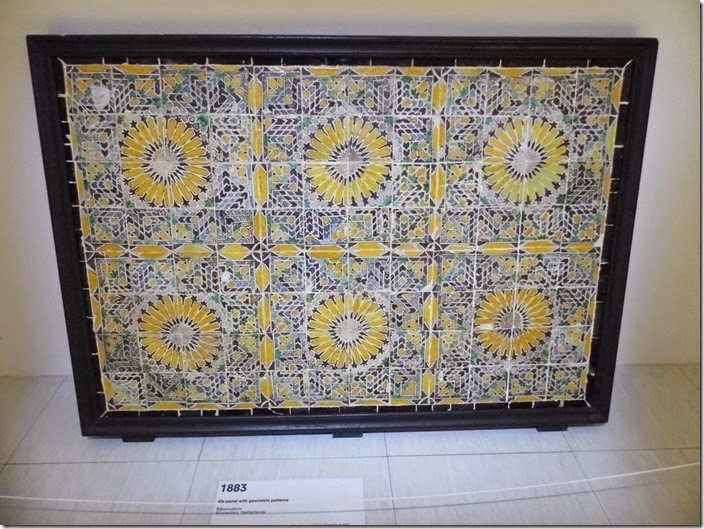
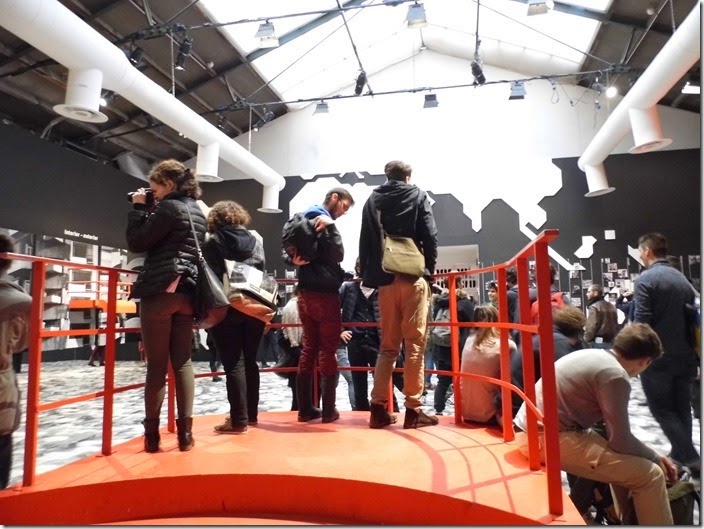
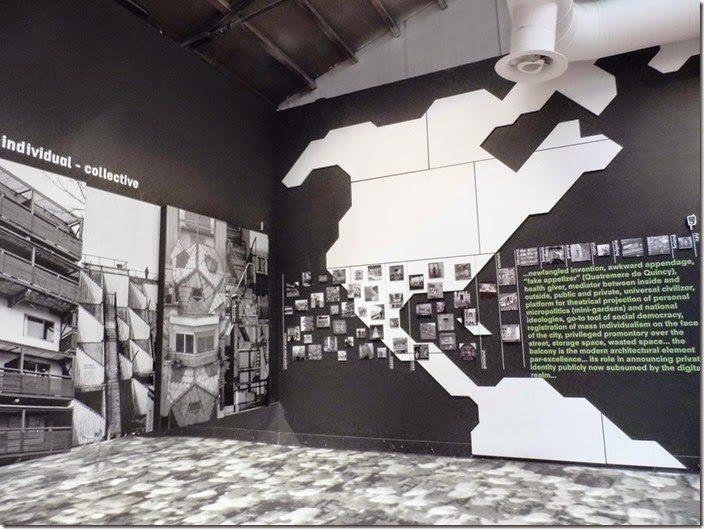
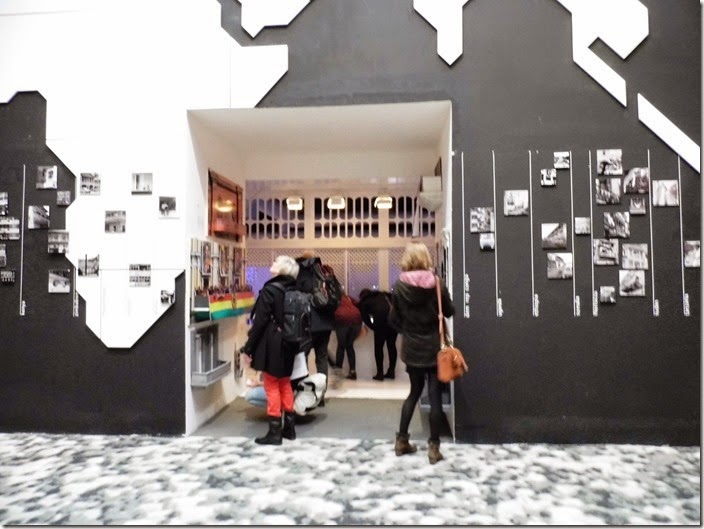
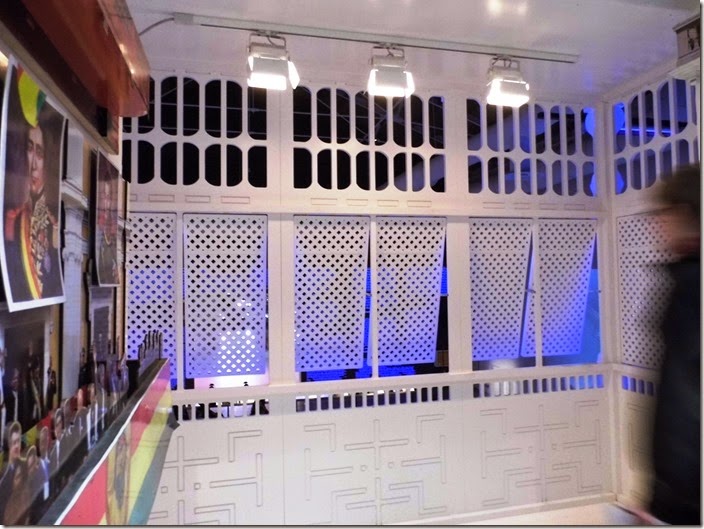
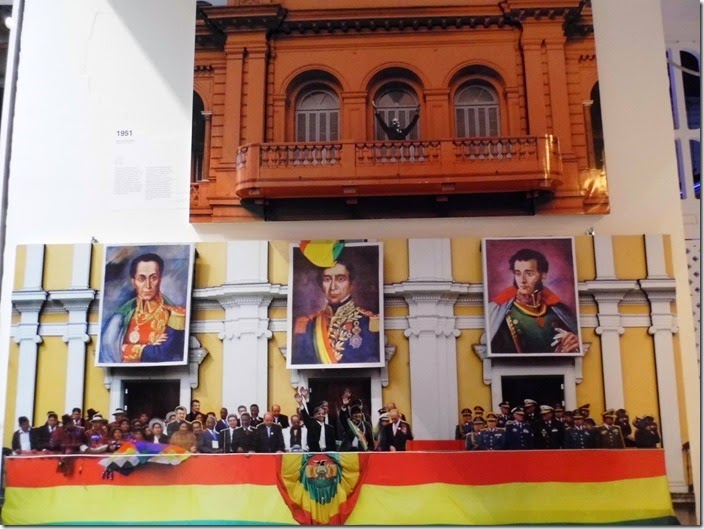
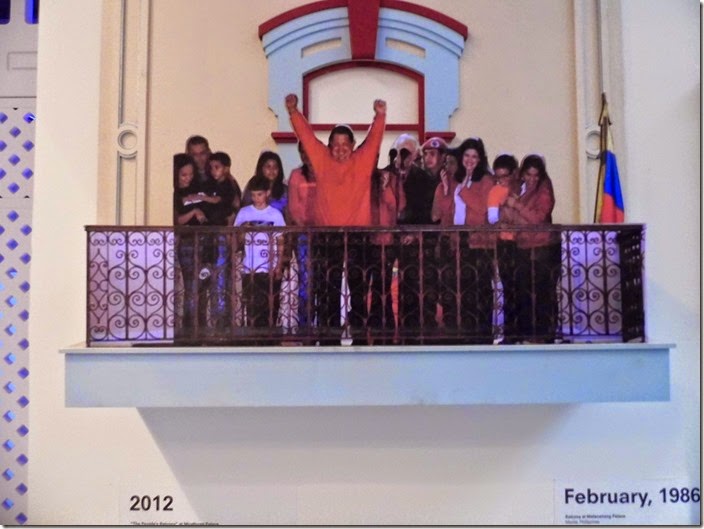
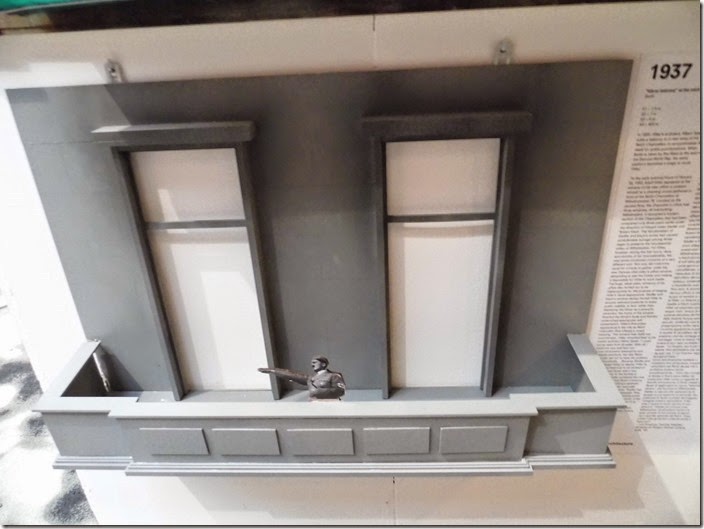
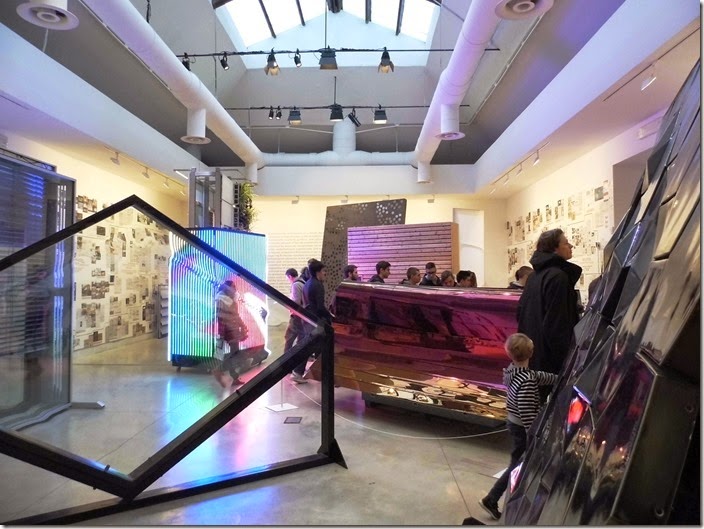

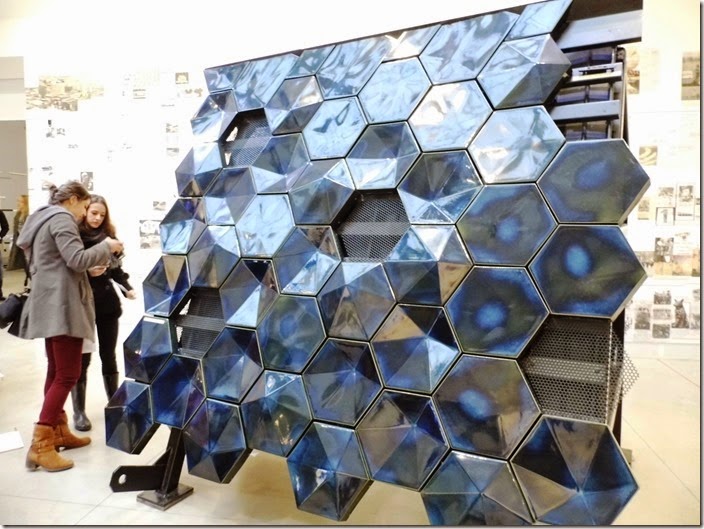
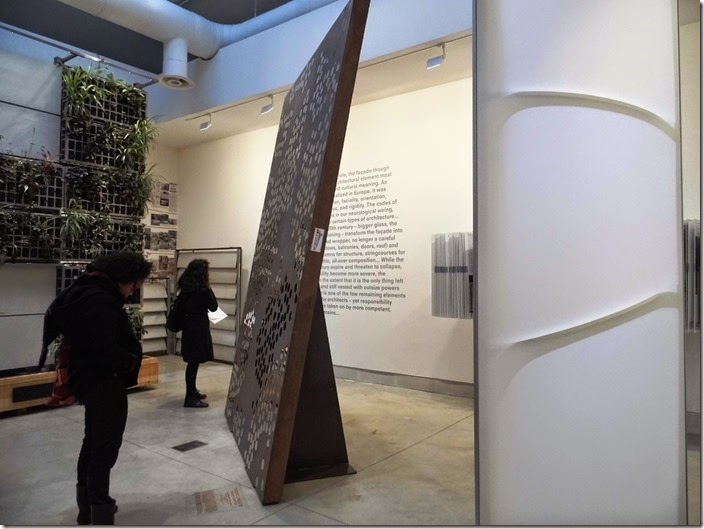

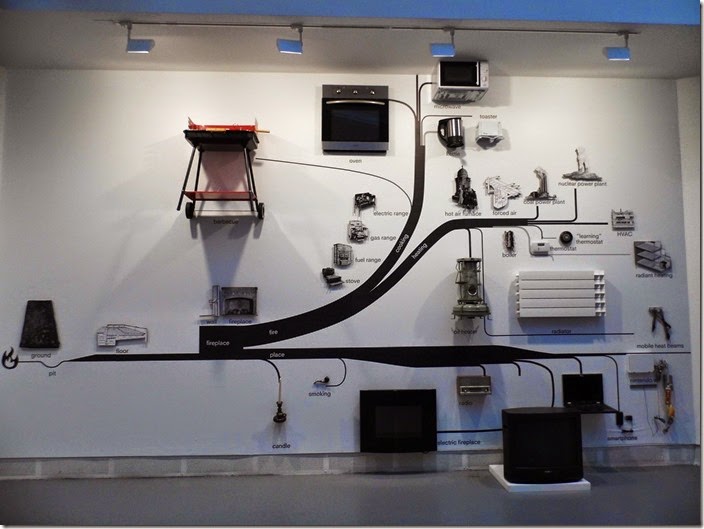
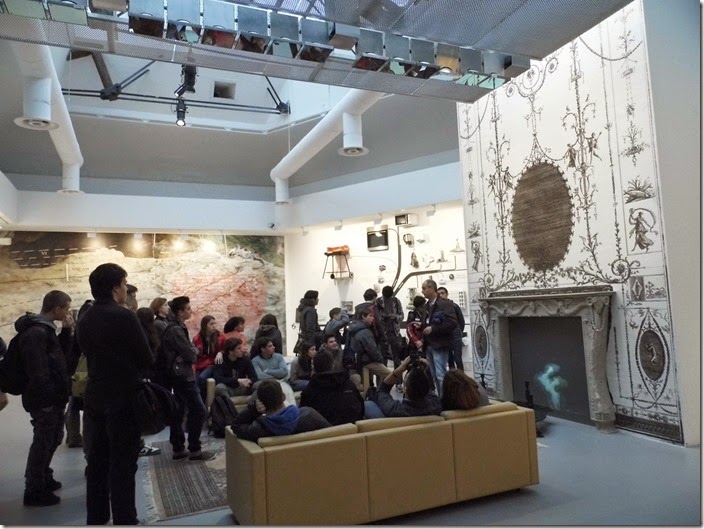
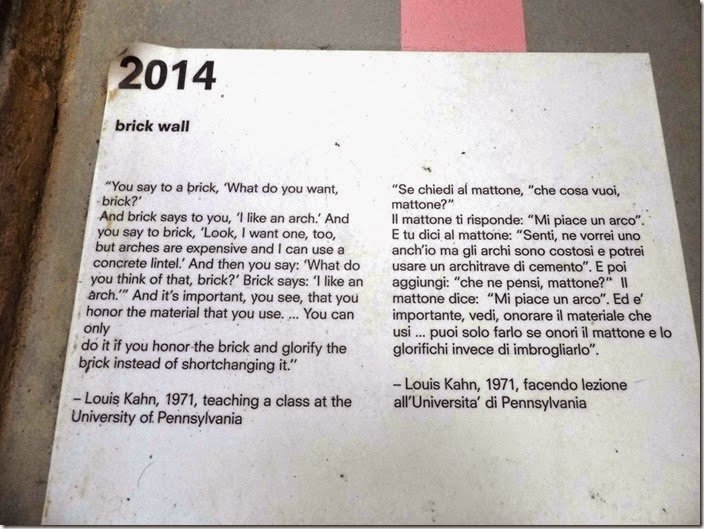
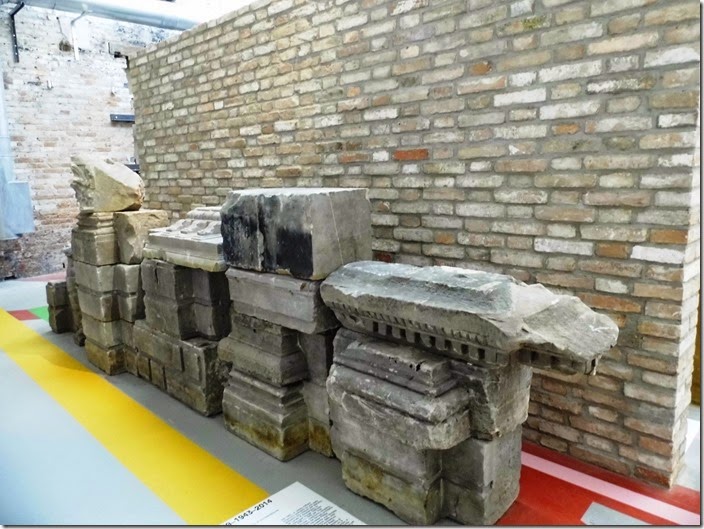
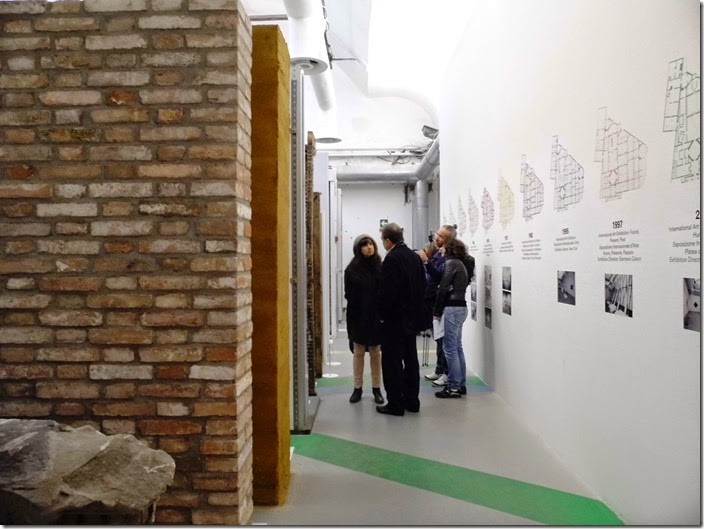
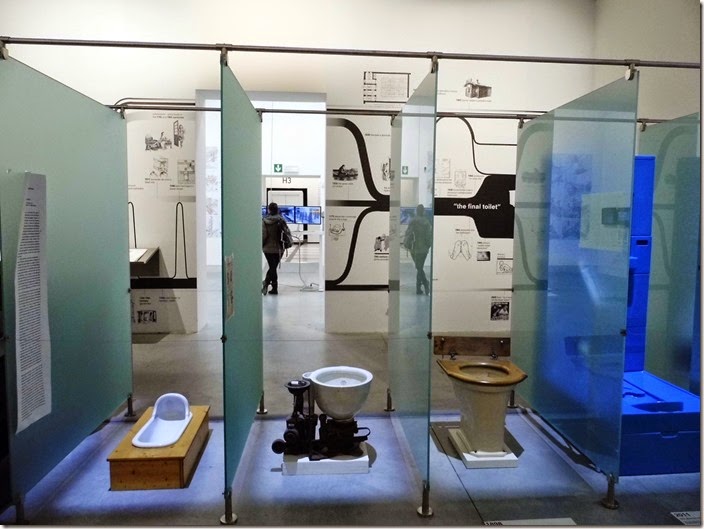
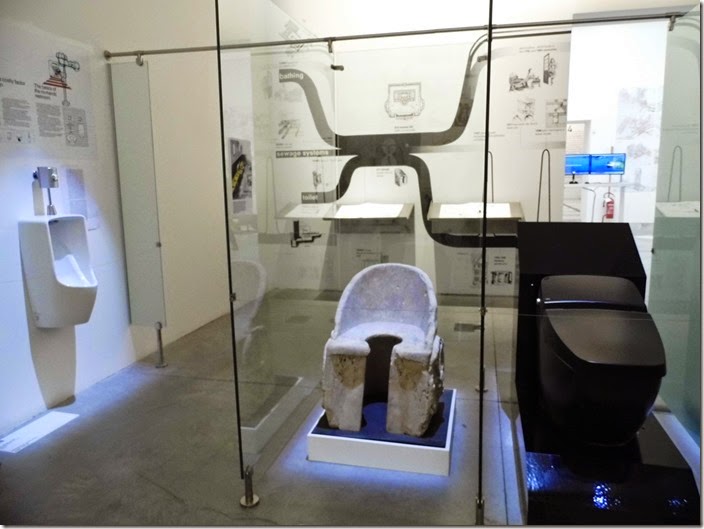
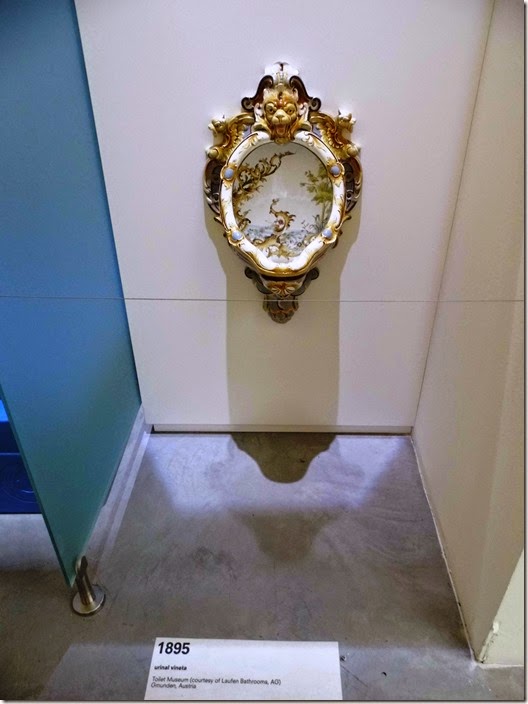
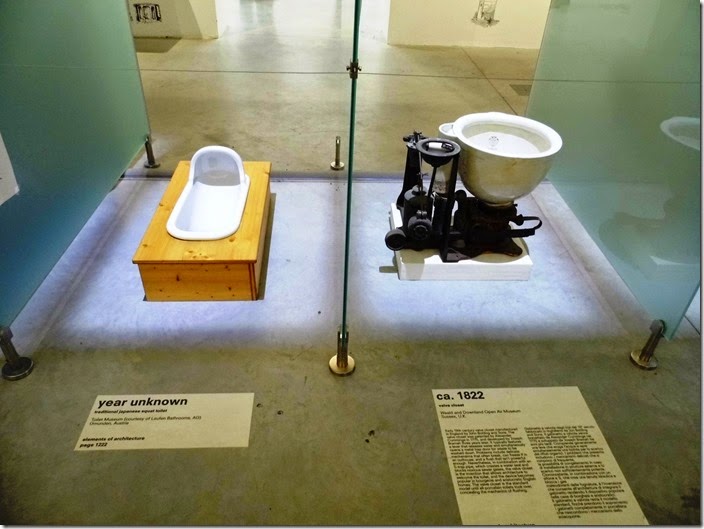
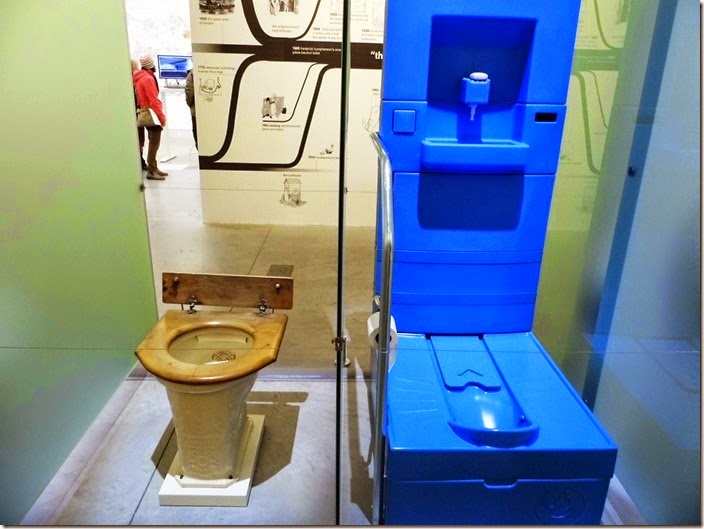
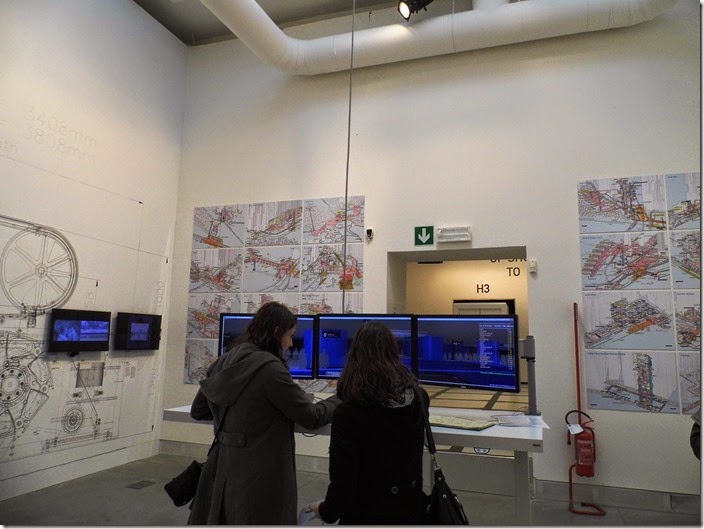
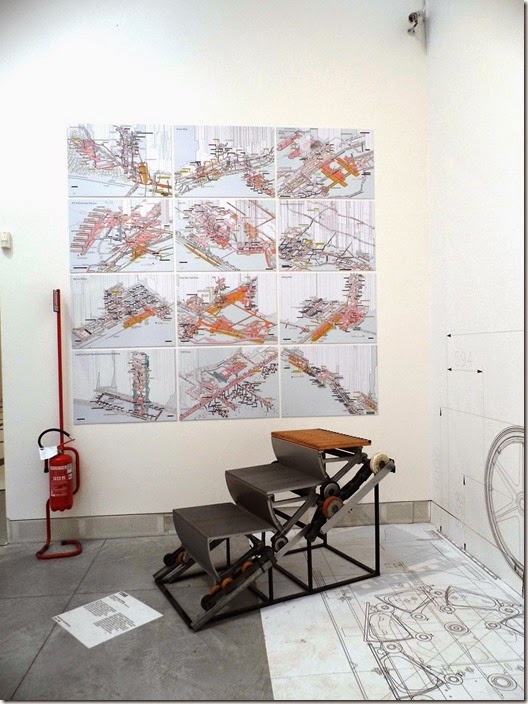
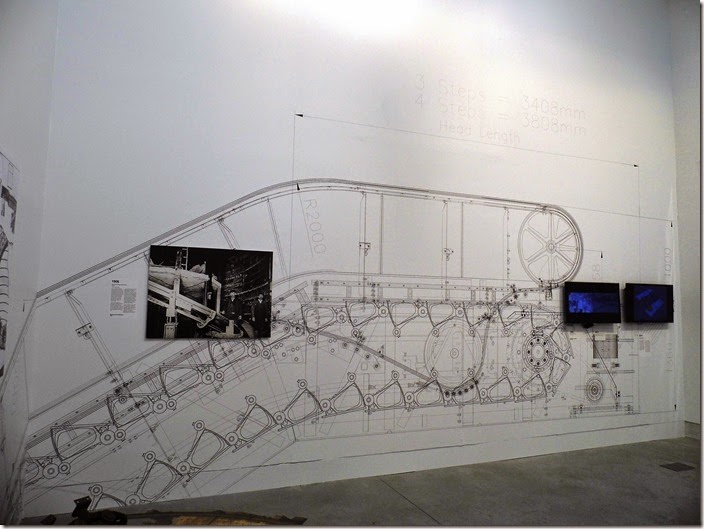
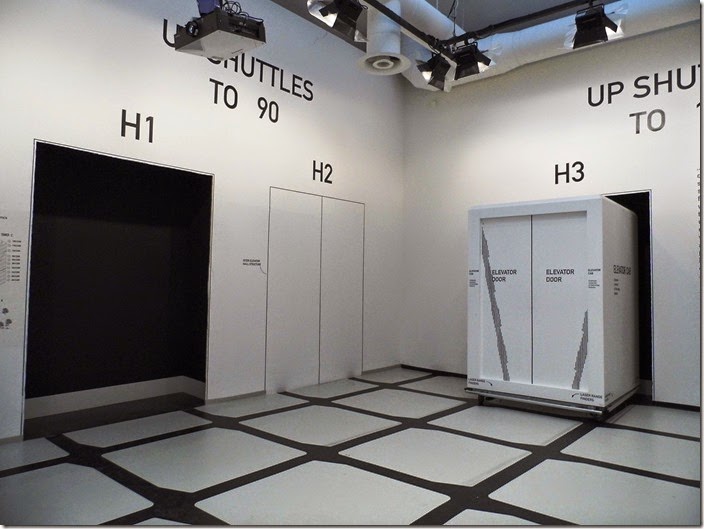
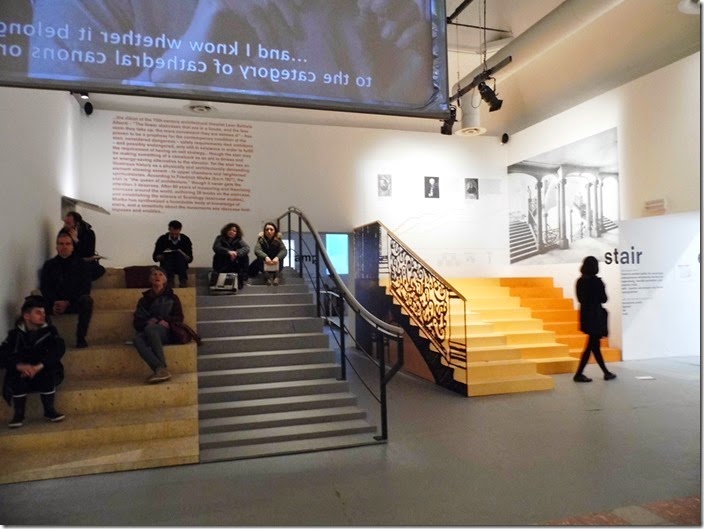

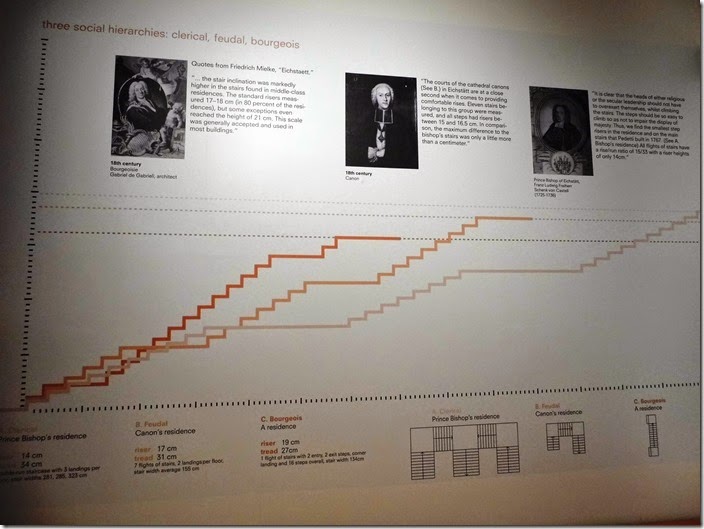
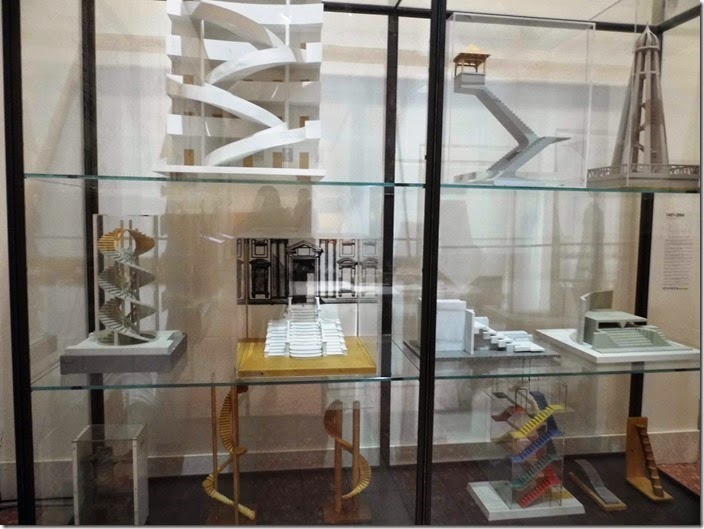
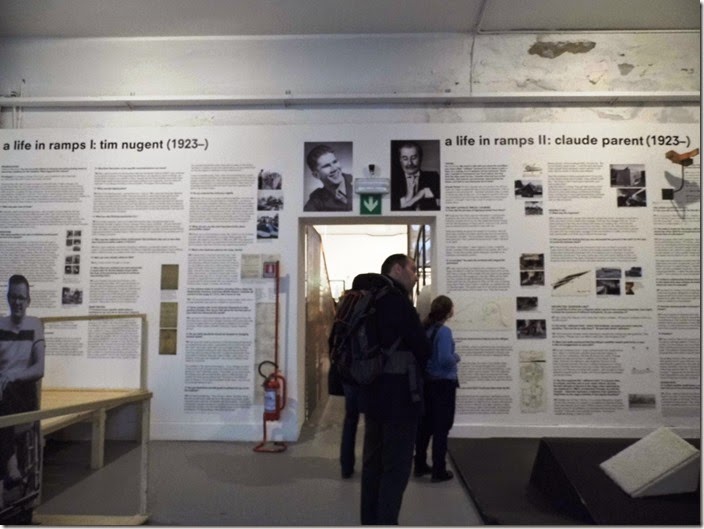
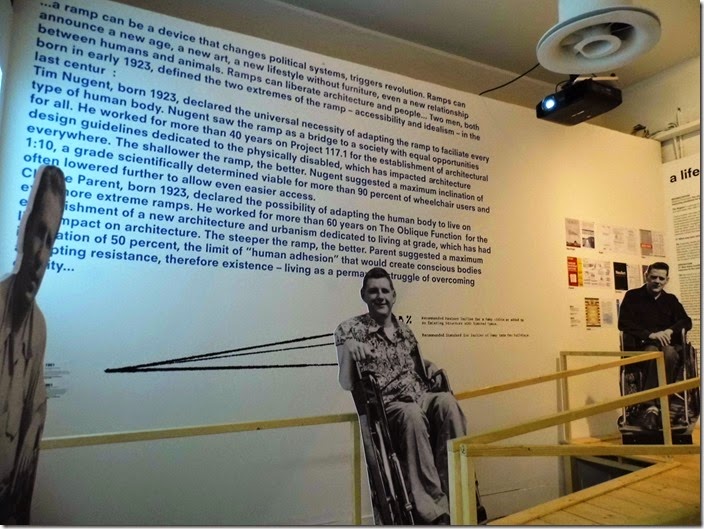
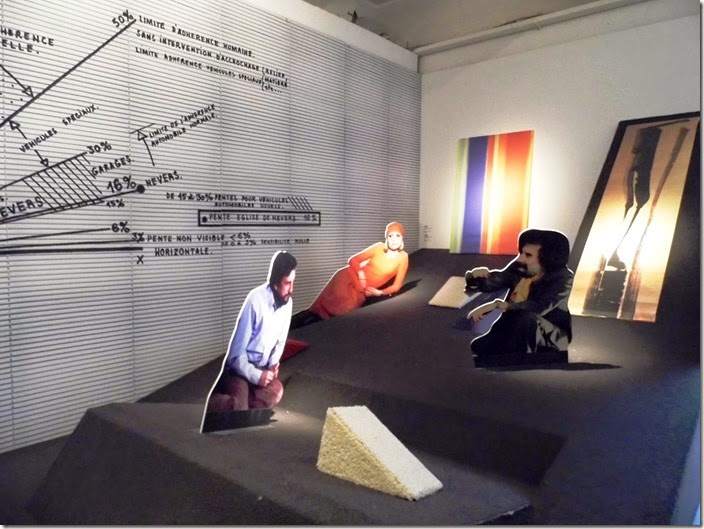
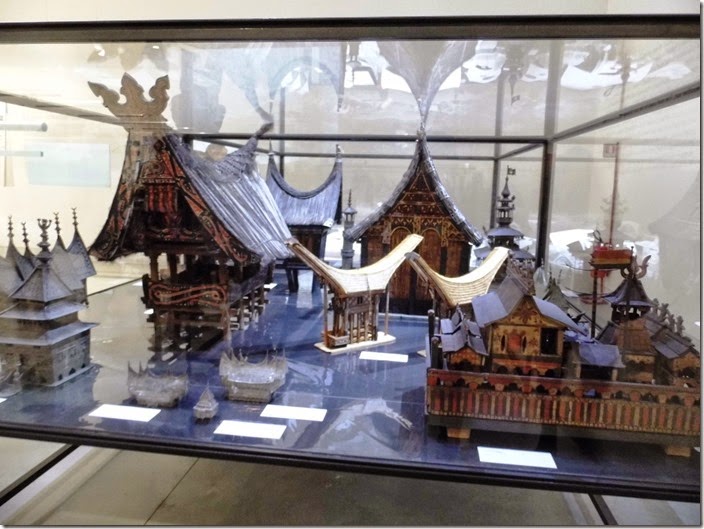
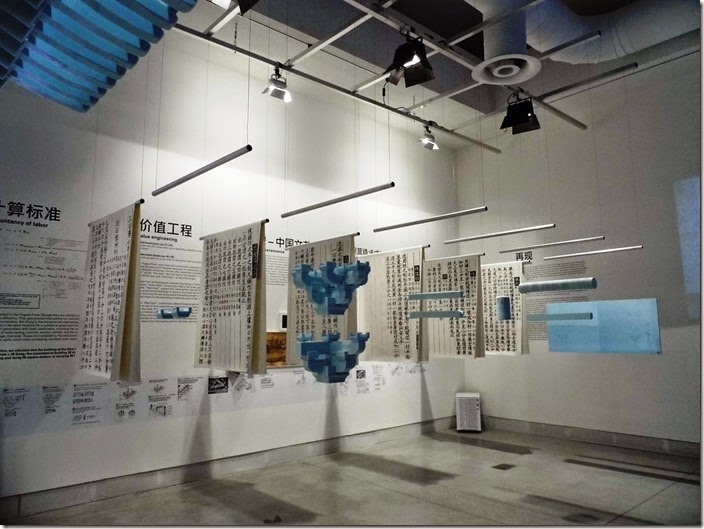
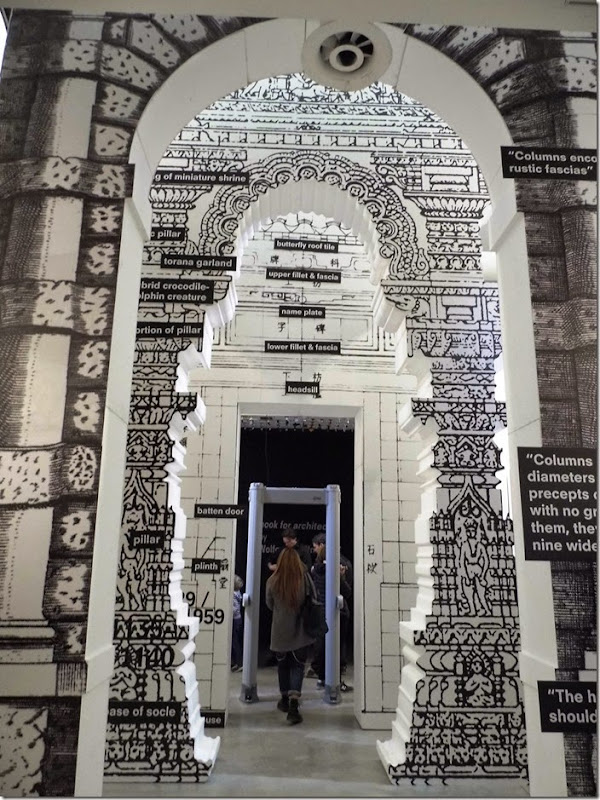
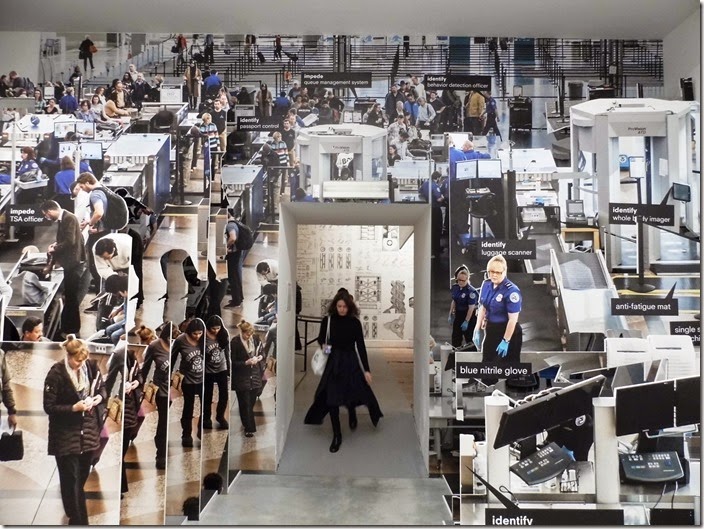
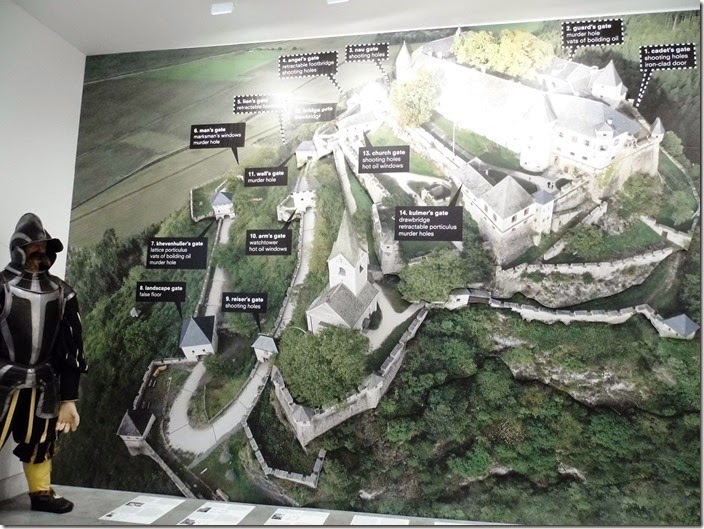
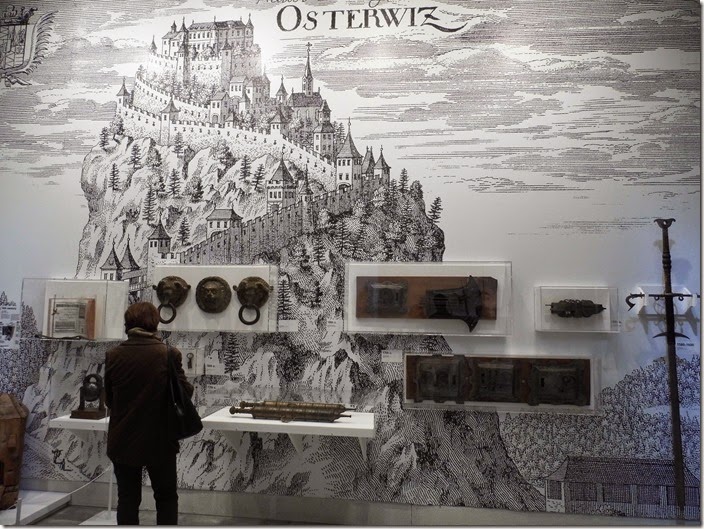

Post a Comment